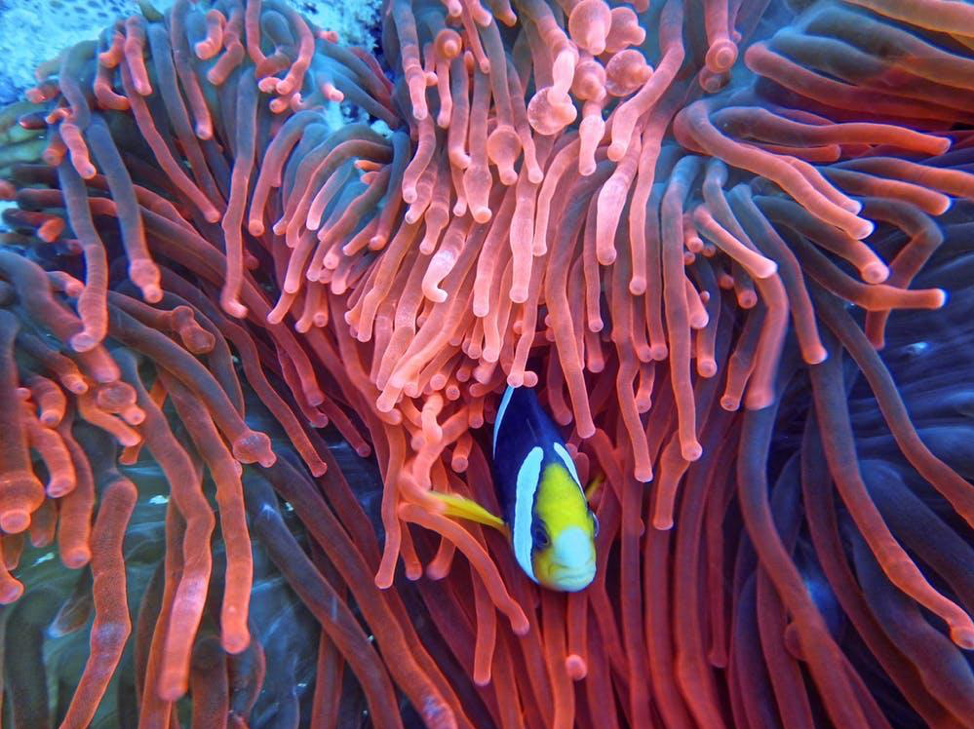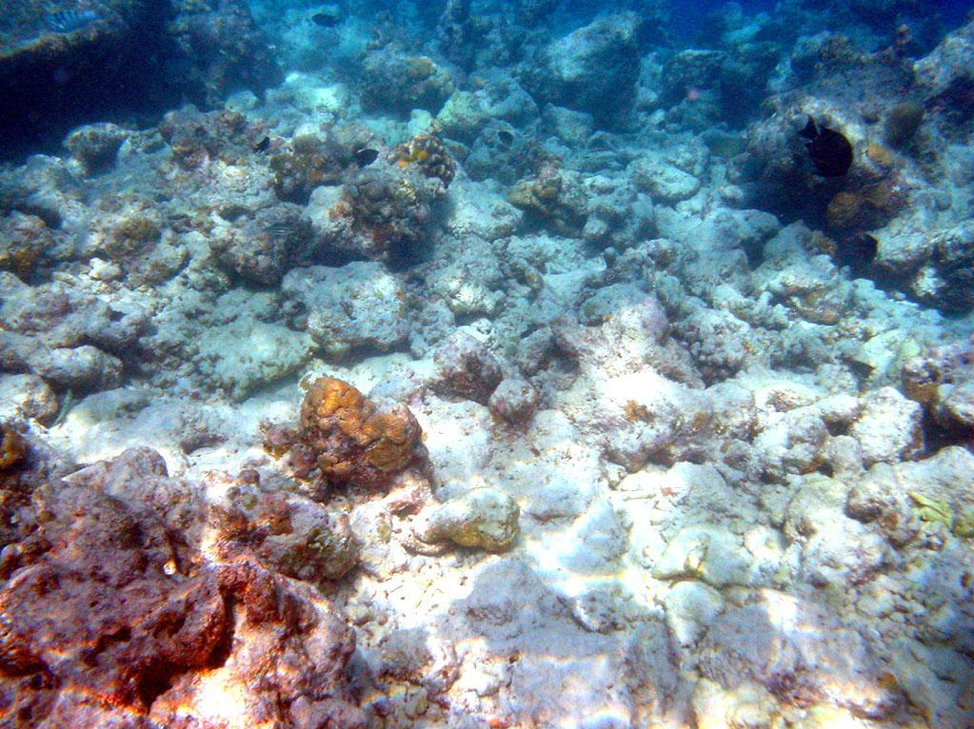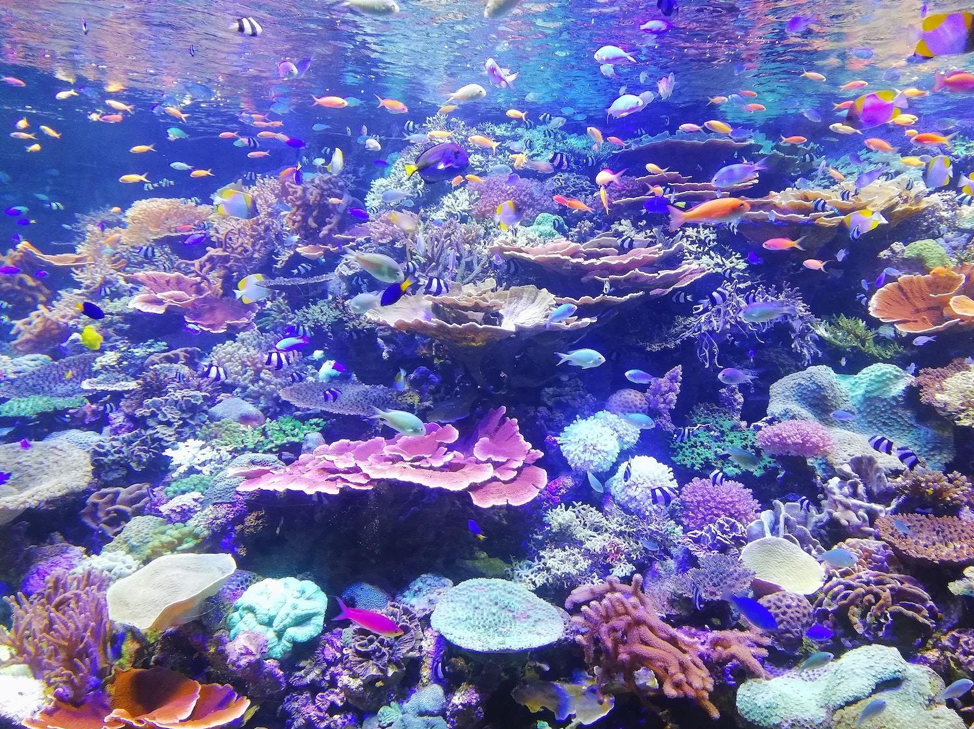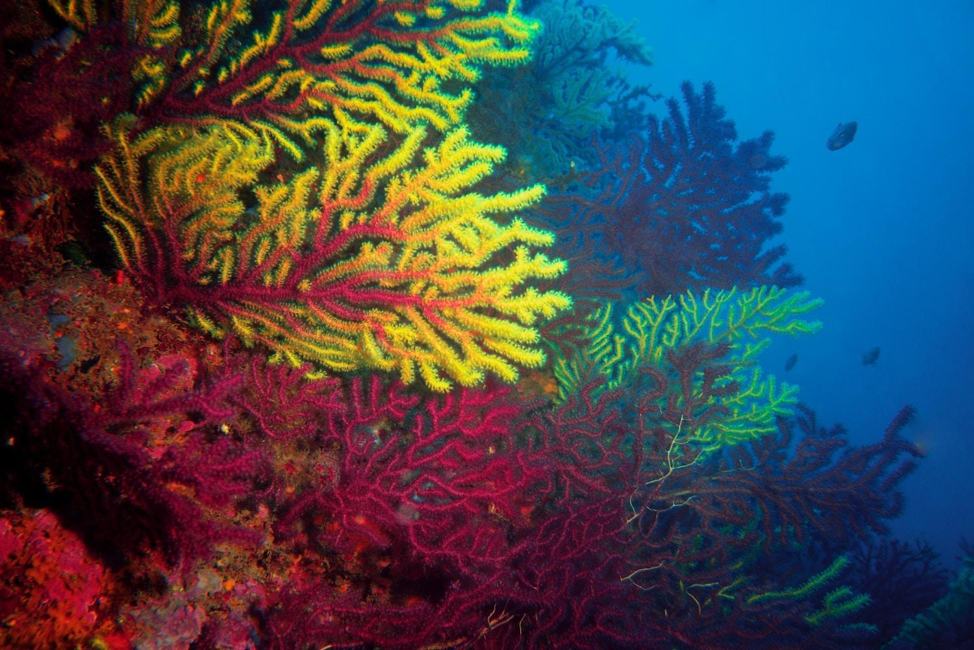Rights for the Coral Reefs
Figure 1 Clownfish in anemone via Pexels
By Mehrose Akhtar
Coral reefs, the incredibly stunning rainforests of the seas, now battle for survival. But hope exists in the form of innovative solutions. Earth Law Center and partners Howell Conservation Fund and ReefLife Restoration propose to take coral reefs out of the realm of property and insure the reef for the benefit of the whole ecosystem (that includes humans). This approach can include payouts from local businesses, restrictions on use, and programs for restoration, but also requirements for local industry to reduce emissions and land-based pollution.
Two countries, (Ecuador and Bolivia), several rivers (the Whanganui in New Zealand, the Atrato and Amazon in Colombia) and many towns have amended laws to recognize Rights of Nature including Santa Monica, CA and Crestone CO. This approach embodies a holistic view with much promise.
Over the years, countries have designated segments of sea for protection to practice rearing, transplanting and monitoring of reefs. Marine Protected Areas (MPAs) were created to prevent overfishing and destructive fishing practices so corals could recover fast despite any single disturbance. MPAs are categorized as extractive zones, multipurpose zones and no-take zones. Currently, despite MPAs, only 4% of the world’s oceans are protected. The Earth Law Framework applies this approach to the establishment and governance of MPAs to create a legal obligation to protect coral reefs.
Intro to coral reefs
Ocean health depends, in part, on coral reef health. Coral reefs protect coastlines from damaging effects of wave action and tropical storms, provide shelter to many marine organisms, create essential nutrients for marine food chains, help with nutrient recycling and assist in carbon and nitrogen fixing.
The total net benefit per year of the world's coral reefs is $29.8 billion. Tourism and recreation account for $9.6 billion of this amount, coastal protection for $9.0 billion, fisheries for $5.7 billion, and biodiversity for $5.5 billion.
Covering approximately 0.2% of the ocean’s floor, coral reefs usually prefer shallow water at depths of less than 150 feet since they require sunlight to grow. However, some live at deeper levels up to 450 feet. Fascinatingly, they photosynthesize but do not make their own food.
Coral reefs are in fact animals that behave like plants. Thousands of polyps (tiny animals) live together to form colonies. They do so by excreting calcium carbonate exoskeleton beneath them. Over time, skeletons of numerous coral colonies accumulate to build the structure of a reef. Other species, fish, algae and microorganisms then build their homes on or around the reef making it a rich ecosystem. One quarter of all ocean species depend on coral reefs.
Threats to Coral Reefs
It takes millions of years for the reefs to form, but just a few decades or less for them to get smothered by pollution and diseases.
Over half of coral reefs have died in the last 30 years due to pollution, warming and acidifying oceans caused by human activity. Scientists predict that human activity will threaten 90% of the coral reefs by 2030 and almost all of them by 2050 if existing practices continue.
Specifically, coral reefs face threats from:
Physical damage or destruction from coastal development, dredging, quarrying, destructive fishing practices and gear, boat anchors and groundings, and recreational misuse (touching or removing corals).
Land-based pollution that finds its way into coastal waters:
Sedimentation from coastal development, urban stormwater runoff, forestry, and agriculture which smothers corals and interferes with their ability to feed, grow, and reproduce.
Nutrients (nitrogen and phosphorous) from agricultural and residential fertilizer use, sewage discharges (including wastewater treatment plants and septic systems), and animal waste which support microorganism growth that harms corals.
Pathogens from inadequately treated sewage, stormwater, and runoff from livestock pens which causes coral disease.
Toxic substances, including metals, organic chemicals and pesticides found in industrial discharges, sunscreens, urban and agricultural runoff, mining activities, and runoff from landfills which results in coral bleaching.
Trash and micro-plastics can snag on corals and block the sunlight needed for photosynthesis, or entangle and kill reef organisms and break or damage corals.
Overfishing can alter food-web structure and cause cascading effects, such as reducing the numbers of grazing fish that keep corals clean of algal overgrowth. Blast fishing (i.e., using explosives to kill fish) can cause physical damage to corals as well.
Coral harvesting for the aquarium trade, jewelry, and curios can lead to over-harvesting of specific species, destruction of reef habitat, and reduced biodiversity.
Figure 2 Bleached corals. Bruno de Giusti via Wikimedia Commons
Traditional coral reef protection
Both local and governmental organizations have made efforts to protect reefs either through setting goals or through funding:
The International Coral Reef Action Network (ICRAN) first identified that 70-80% of world’s coral reefs are in developing countries and has since worked to strengthen local communities and assist them in managing marine life and coastal ecosystems.
In 2012, United Nations Program (UNEP) partnered with Global Coral Reef Monitoring to execute Green Fins which registered 260 centers globally to implement ecosystem-based marine management in coral reef areas, in line with UN’s sustainable development goal 14. As a result, 15.4% of terrestrial and inland water areas and 3.4% of global ocean were protected since 2012.
Other projects like OneReef restore reefs expand community capacity with science-based monitoring to recover reef health, local trainings, infrastructure to protect reefs and sustainable financing plans. By taking local stakeholders into consideration, OneReef Community Partnership successfully restored 425,000 acres of reef for $2 per acre.
Coral Guardian, a French nonprofit founded in 2012, focused on raising awareness, conducting scientific research of marine ecosystems and proposing optimistic solutions among general public, youth and businesses.
As laudable as these measures are, more needs to be done. A professor at Stanford University noted that scientists do not change the world; political leaders and people do.
Figure 3 School of fish on corals. Photo by Sagar on Unsplash
Case studies of successful coral reef protection
Australia, Indonesia, Mexico and the Caribbean Islands have all successfully implemented coral reef conservation solutions. These places have used market driven approaches, community engagement, piloting, environmental policies, parametric insurance and Rights of Nature approach to protect coral reef ecosystems. We will now have an insight into some of these noteworthy coral reef stories.
Victory for the Great Belize Reef
The second largest barrier reef in the world (and it can be seen from space, see image below), the 200-mile Great Belize Reef hosts 1400 species including endangered ones like the green, loggerhead, and hawksbill turtles, West Indian manatees, the American marine crocodile, and others. UNESCO believes the reef is safe for the time being, and took it off the endangered list in 2018. The Great Belize Reef suffered enormous losses in the years 2009 up until 2018 due to destruction caused by offshore oil drilling. Now thanks to the visionary steps taken by the government and the community, the reef thrives once again.
Figure 4 Great Belize Barrier Reef from space. Jeff Williams (NASA).
So how did Belize do it? According to National Geographic public concerns about the reef heightened after 2011. At that time, a people’s referendum was held, whereby 96% of the people voted to protect the reef and deject oil drilling practices. Oil contracts became illegal due to pressure from the people. In 2016, the government banned offshore oil drilling in all its waters. Then in 2018 the government applied stricter regulations against deforestation of the mangrove trees. UNESCO called Belize’s plan “visionary.”
Not just that, but starting in 2011, the government of Belize also executed other plans to protect its environment. Belize used a new area-based fishing licensing system and verification process to prohibit open access fishing and instead curtailed managed access pilot. Piloting policy aims to improve overall health of the ocean and coral reef ecosystem by licensing fishing and creating no-take zones to sustain marine population. At Belize, only qualified fishermen were permitted to fish. Their fish catch was closely monitored from pilot sites. Unqualified fishers were denied licenses. As a result, fishing violation dropped by 60%.
All these actions, namely environmental taxes for conserving the reef, putting limitations on fishing and boosting its no fishing zone from 3% of its waters to 10%, were appreciated by international organizations. Thus, coral cover increased by 35% and 90% of the species in Belize survived manmade pressures and reproduced. This 9-year struggle resulted in a model to lead ocean and reef protection around the world.
Wakatobi, Indonesia amps up reef protection
5.1 million hectares of coral reefs are located in Indonesia of which 65% is endangered due to destructive fishing practices (namely sand extraction, fishing bombing and overfishing). Many locals in Wakatobi, Indonesia voiced their concerns about the coral reefs.
The manager of the Fisheries office, Nadjib Prasyad stated that protecting coral reefs is like protecting the fish. If coral reefs die, so do the fish. As a result, the government of Indonesia along with Coral Reef Rehabilitation and Management Project (Coremap) empowered local communities to align on reef protection. They sent out radio messages in villages, trained fishermen, educated students in schools and monitored activities to promote healthy fishing and coral reef management.
As a result, Indonesia successfully established coral reef management agencies in 358 villages and witnessed an increase in the income of Coremap areas by 21% since 2008. Additionally, Indonesia also saw a reduction of 60% in destructive fishing practices since 2005. Coremap now forms part of a Coral Triangle Initiative with 4 other countries that are focusing on preserving the reefs.
One of a kind mission in St Croix: the making of coral babies to restore reefs
St Croix, in the Caribbean Sea, is home to thousands of coral reefs species. Scientists and researchers at this island used unique tactics of growing corals in nurseries and relocating them to abandoned reefs.
Figure 5 Photo by Juanma Clemente-Alloza on Unsplash
Nature Conservancy along with its partners used sexual reproduction measures to grow coral babies. Teams swam underwater to collect gametes (eggs and sperm) from Elkhorn Corals. As a result, 750,000 coral embryos spawned in protected nurseries. Over the years, more corals and a diversity of fish re-appeared in that region.
Enter parametric insurance
Parametric insurance offers a new approach to coral reef protection.
Let’s take Hawaii as an example, a place highly exposed to natural disasters. Traditionally, Hawaii depends on the Federal Emergency Management Agency (FEMA) and the National Flood Insurance Program to support disaster recovery. In addition to a limited budget, federal funds only support specific initiatives – leaving the vast majority of losses for the State and counties to pay for. When a storm occurs, like Hurricane Iniki near Waikiki, it means three years of total government spending.
Traditionally, a disaster happens then months (or years) later payouts appear - while parametric insurance pays out as soon as an index is reached (in as quickly as ten to twenty one days). Payout for this type of coverage is set in advance of purchase, by estimating the loss as accurately as possible, subject to certain conditions being satisfied. The policy cost is based on a predetermined trigger. In case of Hawaii, if it uses parametric insurance, that could set a trigger for natural disaster to be based on the maximum wind speed of a hurricane as it passes through a specific covered area, such as the Ala Wai watershed. So, any hurricane with one-minute maximum winds of ninety-six miles per hour or higher, as it passes through the Ala Wai watershed, would result in a payout.
Not just an idea, Mexico has already used this approach to protect part of the Mesoamerican Reef along its Yucatan Peninsula from hurricanes as we have seen above. Although 80% of the the corals in the Mexican Caribbean face bleaching or have disappeared, hurricanes cause the most short term damage. Tourism, which generates about $9 billion a year, helps fund the trust.
In 2006, Mexico’s state government of Quintana Roo, along with Nature Conservancy, pioneered the use of parametric insurance and created a Coastal Zone Management Trust to protect coasts and corals in the Caribbean from hurricane damage.
The government made use of a pre-set financial arrangement of loans and taxes, from local governments and nearby hotels and tourist industry, to protect beaches, wildlife and corals in the Caribbean from hurricane damage. This policy not only acted as a defense mechanism and made reefs more resilient towards damage but it also saved time and helped diminish disputes among various groups regarding economic activities.
How Earth Law can help coral reefs
Rather than treating the ocean and its inhabitants as property, a growing global movement proposes to make Nature a subject that holds rights. This approach strengthens the innovations currently underway to protect coral reefs.
Building on wins around the world, Rights of Nature proposes recognizing ecosystems and species as legal entities. The Earth Law framework goes beyond the traditional methods of “resource” management[ii] to provide a clear legal mandate for managing protected areas as part of a system,[iii] and as part of the whole that humans are also a part of.
Earth Law recognizes that Nature has inherent rights to exist, thrive and evolve. Seeing coral reefs through this lens will help strengthen legal accountability to protect coral reefs. Like many rights-based movements, Rights of Nature will help shift norms in how we see entities that previously did not have rights.
What would this look like in practice?
Decisions that might affect ocean health need to factor in the cost that suffered by a third party as a result of an economic transaction – ocean ecosystems themselves. So the ocean stops being property and a commodity to be bought and sold, and instead becomes a subject with the right to exist, thrive and evolve.
Activities maintain or improve ocean health, and do not further damage it. That means reduced take or no take zones, adoption of eco-tourism and other means of livelihood for local communities, enforced and managed MPAs, inclusion of all stakeholders (including general public and ecosystem guardians) in decision making.
Adopt an approach of early prevention – proactive action to save reefs now, rather than wait for them to further deteriorate. Precautionary management means considering the longer term impact of any activity and remembering that marine ecosystems recover slowly, with many factors at work that we don’t entirely understand yet.
Communities gain the right to defend local marine ecosystems, and take an active role in reef preservation. Recognizing the rights of reefs will ensure healthy livelihood for the locals, promote ecotourism and maintain richness of the ecosystems.
If humans have rights based on their existence, shouldn’t oceans and corals? Read more with responses to frequently asked questions.
Want to help protect coral reefs?
Check out ELC’s ebook
Sign up for ELC’s newsletter





